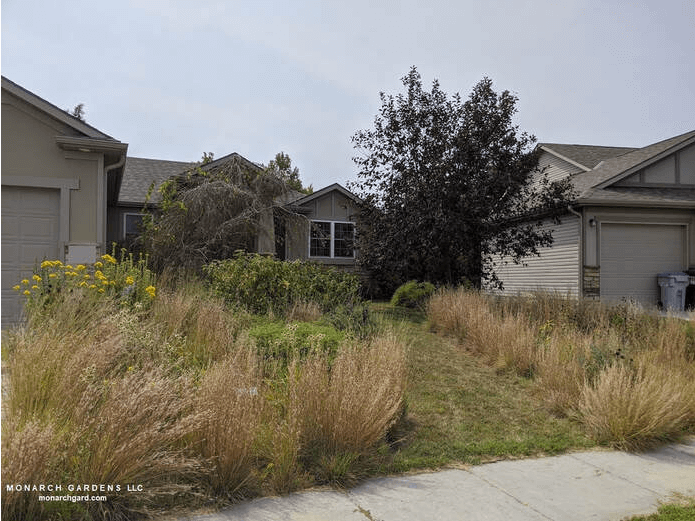
On Home Affordability, Poverty, and Unlawning America
I don’t know who that Michael Green financial analyst guy is who looked at one county in NJ to state
No topic is hotter than how to avoid and / or work with weed control when they come with a stern letter. In my town, any report filed online by a neighbor must be followed up with an inspection and letter. Sometimes it really is a weedy landscape full of invasive threats, and sometimes it’s a well-intentioned gardener who, for a myriad of reasons, has a garden that’s a bit too wild.
I’ve written before on how plant selection and management is critical, and how gardeners often don’t give these things enough research and attention. But if you are in a predicament where you can’t start from scratch — or do a significant makeover — there are some strategies to employ which show your landscape has purpose, at least to the casual passerby.
Let’s explore our garden at HQ, which has had its run ins with the law. And that’s ok — you can’t change minds or policies by playing it safe with a monoculture of lawn. So first up, the oldest part of the 1/4 acre suburban lot:

Let’s all agree that this is a “wild” garden by any standard definition of traditional suburban landscaping. There’s no lawn for starters, but further, the plants are diverse, not tiered by height, and spreading organically. Some would call it messy, some would call it lush and healthy. I want you to put post-it notes or fingers over the wooden bridge, arbor, and fountain. What happens? It’s a patch of (pretty? functional?) weeds. Someone has clearly let it go (I confess I have this year purposefully, as a way to repair damage and let the plants fill in some spots, teaching me what / how / where to manage next year — a very different kind of gardening for sure).
But include those three hardscape features (bridge, arbor, fountain) and something happens — the garden is shown to have purpose. It is an intentional space. Not only that, but these linear, hard objects give the eye some place to anchor upon, making the plants more legible. It’s a simple trick, and while it won’t please or convince everyone, it will likely convince those who matter most. Other objects one could use are sculptures, benches, and trellises.

This second image is our front yard, and the plants were chosen even more intentionally because it is a more visible space (it’s not behind a fence). So to start off, read the posts I linked to above about plant selection and management. While plant choice and management — thinning, adding — count for a whole lot, so does a six-foot-wide lawn pathway moving up the middle of the two beds and up around the front of the house. That delineation serves as a place for the eye to rest and to be anchored, and a welcoming access point to move through the wilder landscape; it also ties into the rest of the lawn-dominated suburban neighborhood even if the lawn is not 100% perfectly-manicured fescue. In addition, there is a small sign saying that this is a pollinator garden with a website for more information.
These small strategies can go a long way toward both avoiding and working with weed control. So while your first priority is likely to be removing really tall plants or those that flop over onto sidewalks — and some that have spread too easily — your second priority is to include a bench, an arbor, a path, a sign, or a sculpture to show intentional gardening and not just laziness. If we’re going to change minds we can’t forget that especially in lived, urban areas, there are still de-facto gardening rules — and playing with them, bending their seeming constraints, can lead to some real creativity, satisfaction, and ecosystem function (wildlife habitat, storm water runoff mitigation, soil stabilization, air cleaning / cooling…). Prairie up.

I don’t know who that Michael Green financial analyst guy is who looked at one county in NJ to state

Oh that’s a cool plant, stiff goldenrod, Oligoneuron rigidum. I wonder if that would work in my garden. Maybe it’s
